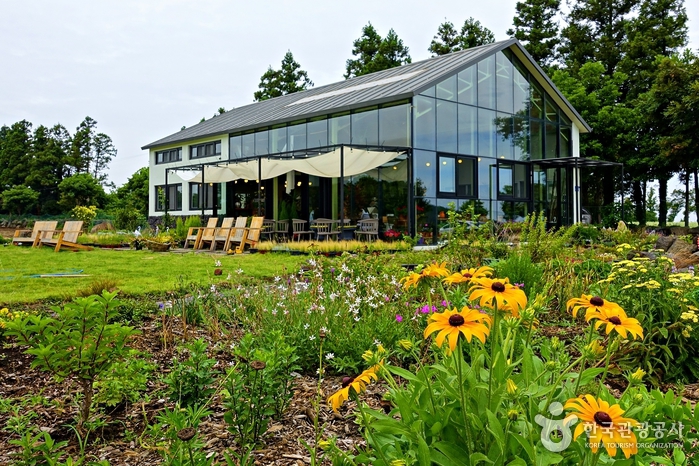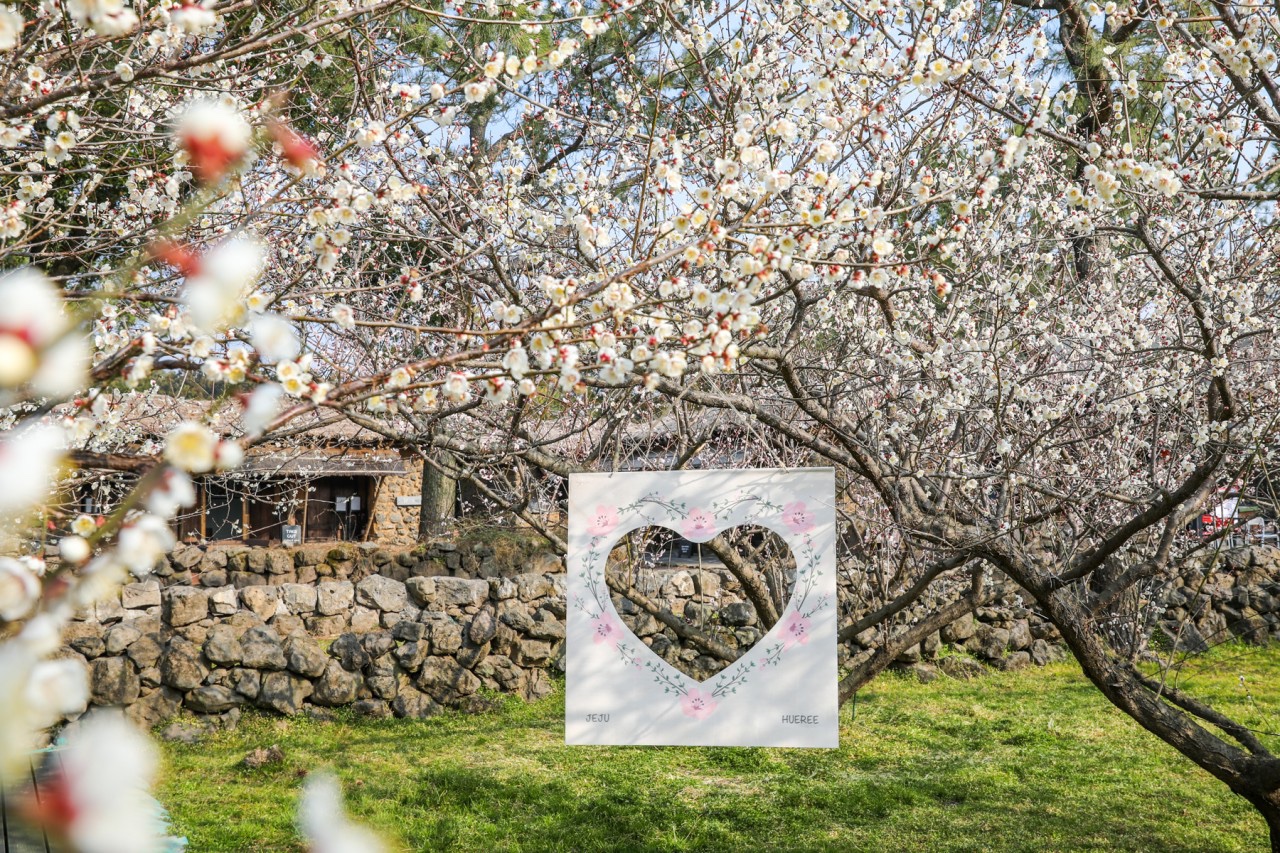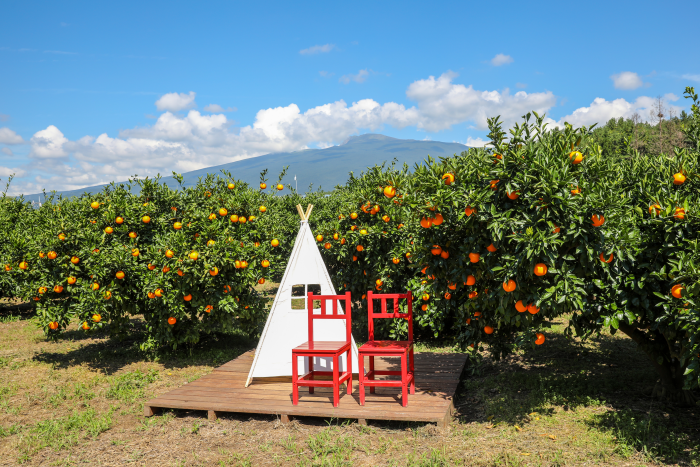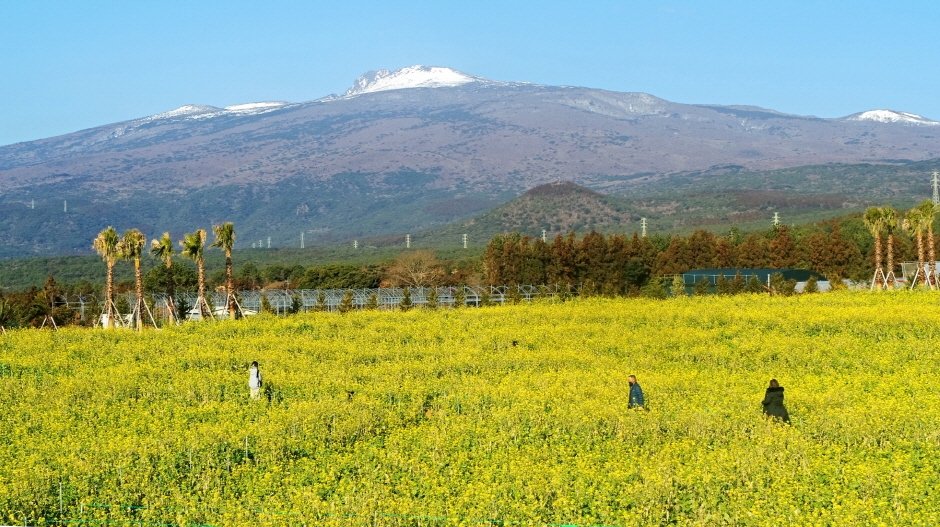Songdangnamu (송당나무)
17.9Km 2024-02-21
68-140 Songdang 5-gil, Gujwa-eup, Jeju-si, Jeju-do
Songdangnamu is a gardening café where visitors can enjoy flowers in a spacious garden. Songdang-ri, known for its abundant rainfall, is recognized as a neighborhood conducive to plant growth, making it popular for landscaping cultivation. The café features a greenhouse filled with various plants such as herbs, palm trees, and catcus, as well as an outdoor garden spanning over 5,300 square meters. The signature menu item is the hallabong ade.
Bravo Beach (브라보비치)
18.2Km 2023-02-17
2614, Haemajihaean-ro, Seogwipo-si, Jeju-do
+82-64-782-8448
Bravo Beach is located near Haemajihaean-ro and Songnan Port in the east of Jeju from which Seongsan Ilchulbong Tuff Cone is seen. The beach uses beds as chairs and decorates the outdoor tables with bamboo shade canopies and rattan furniture, which exudes an exotic vibe. From the second floor, visitors can see Seongsan Ilchulbong Tuff Cone and Udo Island at a glance. The beach also appeals to family travelers for the spacious lawn where children and pets can run around to their heart's content. In addition to common foods and beverages, pet snacks and bottled wine are available. Bravo Beach allows pets as long as the owners attend to their dogs (dog leash, muzzle, pet waste bags, etc.).
Sangumburi Crater (산굼부리)
18.3Km 2023-01-17
768, Bijarim-ro, Jeju-si, Jeju-do
+82-64-783-9900
Sangumburi Crater has been designated as a Natural Monument. It is located on the southeast side of Jeju, and is a flat crater, about 650 meters wide, 100 meters deep, and 2,070 meters in circumference. If you look at the crater from above up, it looks like a man-made circular stadium. There is a variety of plant-life in the crater. On the north side, Nandaeseong vegetation such as red-thorn trees, and magnolia trees grow, along with the rare winter strawberries. On the south side of the crater, Ondaerim vegetation such as evergreens, maples, and mountain strawberry trees cover the area. Because so many different kinds of trees and plants grow in such a limited space, it attracts the attention of researchers as well.
Seongsanpo Suhyup Market - Jeju Branch [Tax Refund Shop] (성산포수협직판장 제주)
18.6Km 2024-04-17
130-19, Seongsandeungyong-ro, Seongsan-eup, Seogwipo-si, Jeju-do
-
Bijarim Forest (비자림)
18.6Km 2023-11-06
55, Bijasup-gil, Jeju-si, Jeju-do
+82-64-710-7912
Designated and protected as a Natural Monument, Bijarim Forest is home to 2,800 bija trees, ranging from 500 to 800 years in age, spread over 448,165㎡ land area. These majestic trees range from 7-14 meters in x_height, 50-110 centimeters in diameter, and 10-15 meters in crown x_width, so this forest is quite a rare example of its kind in the world. The berries of bija trees were used widely as a medicine used to kill parasites, while the wood was used to make premium furniture and go boards. Forest bathing in a bija forest helps to combat arteriosclerosis, mitigate physical and psychological fatigue, and restore the body’s rhythm.
Bengdwigul Cave [UNESCO World Natural Heritage Site] (제주 선흘리 벵뒤굴 [유네스코 세계자연유산])
18.7Km 2022-12-27
Jocheon-eup, Jeju-si, Jeju-do
+82-1600-0064
With a total length of 4,481 meters, Bengdwigul Cave is shaped like a maze and has one of the most complex lava tube structures in the world. For geologists, this cave is invaluable since it demonstrates how lava continuously flowed over the surface of the ground and the complex route it took to eventually form a tube deep underground. Created particularly close to the earth’s surface, this cave has a number of entrance holes to the tunnel. Inside, the complex structure of the cave unfolds in the form of double-tiered or triple-tiered rooms. A range of lava formations such as lava columns and lava bridges have developed inside this mystical tube.
* The UNESCO World Heritage designated Geomunoreum Lava Tube System of Bengdwigul, Manjanggul Cave, Gimnyeonggul, Yongcheondonggul and Dangcheomuldonggul Caves.
Hueree Maehwa Festival (휴애리 매화축제)
18.8Km 2023-03-20
256, Sillyedong-ro, Seogwipo-si, Jeju-do
• 1330 Travel Hotline: +82-2-1330 (Korean, English, Japanese, Chinese) • For more info: +82-64-732-2114
Held in Hueree Natural Park at the foot of Hallasan Mountain on Jeju Island, Hueree Maehwa Festival is held every spring when the air is filled with the scent of plum flowers. Visitors can enjoy the beautiful plum flower fields at Hueree Natural Park. Photo zones are set up throughout the field, and visitors can also see black pig and peacocks in the park.
Hueree Natural Park (휴애리자연생활공원)
18.8Km 2024-03-11
256, Sillyedong-ro, Namwon-eup, Seogwipo-si, Jeju-do
+82-64-732-2114
In addition, it also offers a series of programs for visitors to get up close and feed animals (such as black pigs), to play traditional games, and to walk barefoot through volcanic cinders. From October to January, the mandarin picking experience is a highlight.
Hueree Canola Flower Festival (휴애리 유채꽃 축제)
18.8Km 2024-02-26
256 Sillyedong-ro, Namwon-eup, Seogwipo-si, Jeju-do
+82-64-732-2114
Hueree Canola Flower Festival is the largest on Jeju Island and takes place in Seogwipo. The canola flower field stretches 13,223 m2 and is filled with carefully grown canola flowers. The festival is also a popular photo spot and attracts people seeking wedding snaps, photos with friends, and more.
Geomunoreum Lava Tube [UNESCO World Natural Heritage Site] (거문오름 [유네스코 세계자연유산])
19.0Km 2024-03-13
Seonheul-ri, Jocheon-eup, and Deokcheon-ri, Gujwa-eup areas in Jeju
+82-64-710-8981
Geomunoreum Lava Tube stands out as one of the distinct oreum (the Jeju language term for parasitic cones) on Jeju Island, marked by its extensive network of around 20 lava tubes running through the volcanic structure. This site is not only a geological marvel but also a sanctuary for diverse biological species. Visitors begin their journey at the Jeju World Natural Heritage Center, from where a path leads directly to the Geomunoreum Lava Tube. It is important to note that prior reservations are required to visit. The significance of this location as a key geological feature was recognized when it was designated as a UNESCO World Natural Heritage Site in 2007. Additionally, an international trekking event is hosted annually to celebrate its global importance.


![Seongsanpo Suhyup Market - Jeju Branch [Tax Refund Shop] (성산포수협직판장 제주)](http://tong.visitkorea.or.kr/cms/resource/41/2887741_image2_1.jpg)



![Geomunoreum Lava Tube [UNESCO World Natural Heritage Site] (거문오름 [유네스코 세계자연유산])](http://tong.visitkorea.or.kr/cms/resource/62/2661662_image2_1.jpg)
 English
English
 한국어
한국어 日本語
日本語 中文(简体)
中文(简体) Deutsch
Deutsch Français
Français Español
Español Русский
Русский